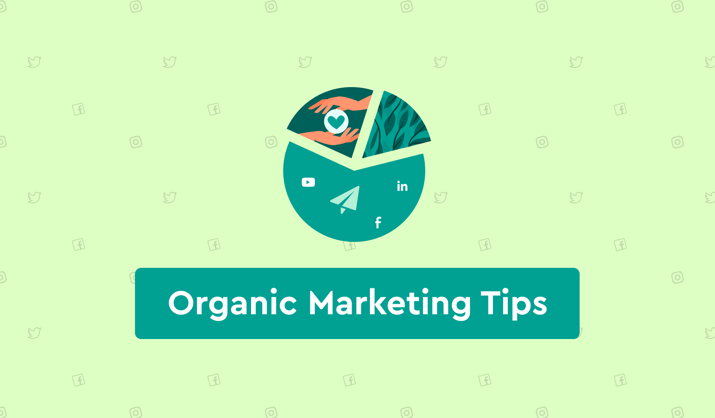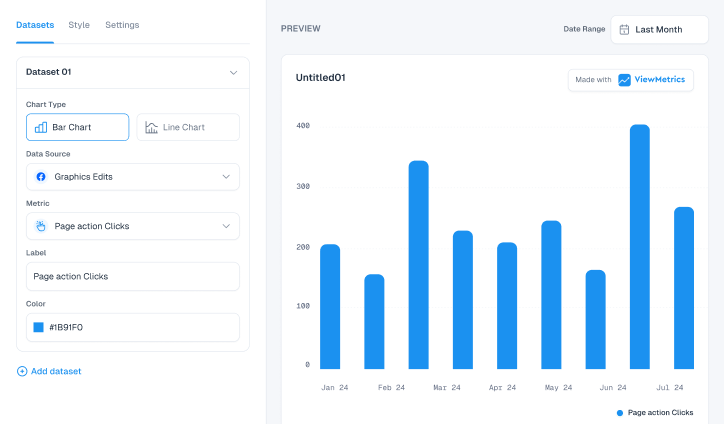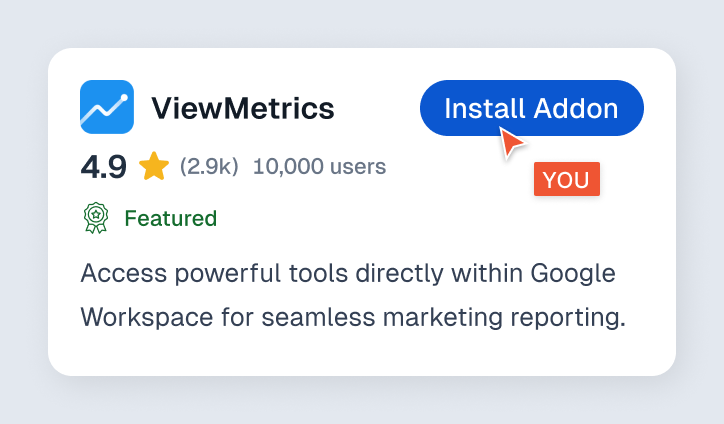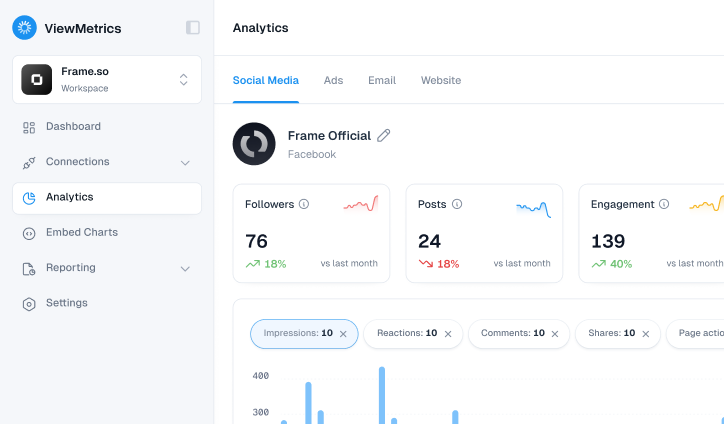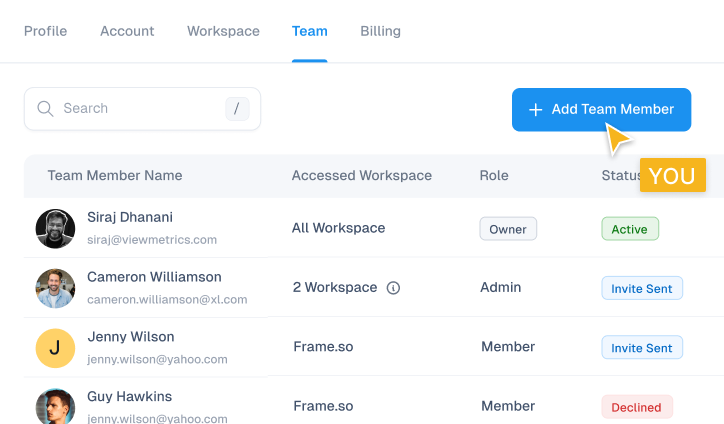Summary for the Blog
- Marketing Reach is the total number of unique individuals who have seen your brand’s message.
- It’s different from impressions, which is the total number of times your content is displayed. Reach counts unique viewers, while impressions count total views.
- There are three main types of reach: organic (unpaid), paid (from ads), and viral (from user sharing).
- You can improve your reach by engaging with your audience, optimizing content for search engines, and using paid advertising.
What is Reach in Marketing?
Reach in marketing refers to the total number of people who see a brand’s message, advertisement, or content. It measures how many unique individuals are exposed to a campaign. A higher reach increases brand awareness and potential customer engagement. This data is often tracked and visualized on a KPI dashboard, as it is an important parameter for measuring marketing campaign success.
What is Reach in Digital Marketing?
In digital marketing, reach focuses on how many unique users engage with the online content. It’s important to differentiate reach from impressions, as reach counts the number of unique viewers, while impressions tally up the total times content is shown, even if the same person sees it more than once.
Understanding and calculating reach helps businesses fine-tune their campaigns, boosting engagement and growing their audience.
Types of Reach in Digital Marketing
- Organic Reach – The number of people who see content naturally without paid promotion.
- Paid Reach – The audience reached through paid ads or sponsored posts.
- Viral Reach – Exposure gained when users share content, expanding visibility beyond the original audience.
View All Your Marketing and Website Data — Instantly
Connect Instagram, Mailchimp, Google Analytics & more
Pre-built dashboards, no setup needed
Save hours on reporting every week

How to Calculate Reach in Digital Marketing?
In digital marketing, reach is a key metric, as, unlike other metrics like impressions or clicks, reach gives you a sense of how wide your audience is by counting each person just once, no matter how often they come across your content. This makes reach essential for measuring the overall exposure and effectiveness of your campaigns.
Formula to Calculate Reach
To calculate reach, use the following formula:
Reach = Impressions/Frequency
Where:
- Impressions refer to the total number of times your content is displayed.
- Frequency denotes how many times each individual sees your content.
How to Calculate Reach Across Different Platforms?
Each platform has its own way of data tracking and measuring reach:
Social Media
- Facebook: Calculates reach by taking the average number of users reached per post and dividing that by the total number of page likes. Read more about Facebook KPIs here.
- Instagram: Simply tracks the number of unique people who saw your content. Read more about Instagram KPIs here.
- LinkedIn: Measures reach by dividing the number of personal LinkedIn connections by the number of company page followers. Learn more about LinkedIn Impressions here!
- YouTube: In the “Reach Viewers” section of video analytics, YouTube shows a funnel with details like unique viewers, impressions, traffic sources, and the click-through rate (CTR) of impressions.
- X/Twitter: Twitter focuses on impressions, which count how many times your post appears, whether in someone’s feed, search results, or conversations. While impressions are useful, they don’t tell you how many unique people actually saw the tweet. Read more about Twitter KPIs here.
- TikTok: TikTok calculates reach by dividing total likes by the number of videos posted, then by the number of followers, and multiplying by 100.
- Snapchat: Snapchat Insights gives data on how your content is performing, available to users with verified or large public accounts.
- Pinterest: Pinterest Analytics tracks the number of unique users who have seen your pins.
Also Read: Important Social Media KPIs to Track
Website/Search Engine
- Google Analytics: It provides ‘users’ and ‘page views’ metrics, where ‘users’ refers to the number of people who visited your site at least once in a given time period, which is similar to reach.
- Google Ads/PPC: Uses models to estimate how many people in a specific location target are seeing your ads across different devices and browsers. Learn more about Google Advertising Tips here.
Email Marketing
Reach in email marketing is measured by how many unique subscribers open your email or click a link within it. This can be further broken down into “open-reach” (who opened) and “click-reach” (who clicked a link).
Also Read: Top 17 Email Marketing KPIs You Should Track
Why is Market Reach Important?
Market Reach is one of the important metrics to compare marketing results:
- Increases Brand Awareness: Market reach is key to getting your brand noticed. With the flood of ads, people see daily, like one paid ad for every four organic posts on Instagram, expanding your reach helps your brand cut through the noise and grab attention.
- Measures and Analyzes Ads: Market reach gives you a clear view of your audience size and how well your ads are performing. If you’re reaching a lot of people but not seeing the conversions you hoped for, it might be time to tweak your ad strategy or messaging.
- Optimizes Targeting Strategies: Knowing your market reach allows you to fine-tune your campaigns. By pinpointing which segments of your audience are most engaged, you can craft your messaging to resonate more deeply with those specific groups.
- Maximizes ROI: Accurately predicting your reach helps you understand the financial potential of your campaigns. This insight allows you to concentrate your efforts on strategies likely to provide the best returns, making your resource allocation and planning more effective.
- Defines Your Target Audience: Understanding your market reach helps you get a clearer picture of who your target audience is. This clarity lets you tailor your marketing strategies and product development to better connect with the right people.
Track your marketing reach effortlessly with ViewMetrics’ KPI Dashboard—turn data into actionable insights!

How to Improve Reach in Marketing?
- Engage and interact with your audience: Don’t just broadcast your message, engage with your audience. Reply to comments and foster conversations to build a community.
- Optimize content for search engines: Make sure your content is optimized for search engines to improve organic reach.
- Unify and diversify your digital marketing efforts: Use a mix of platforms to widen your reach and attract different audience segments.
- Build relationships with followers and influencers: Collaborate with influencers to expand your reach and build trust with new audiences.
- Create and promote compelling content: Quality, engaging content is more likely to be shared, increasing reach.
- Experiment with formats like video and live streams: Diverse content formats can appeal to different audience preferences.
- Identify and target your audience effectively: Knowing who your audience is allows you to tailor content for maximum reach.
- Leverage hashtags: Relevant hashtags increase the discoverability of your posts on social media platforms.
- Implement paid advertising: Sponsored posts and paid promotions can boost the visibility of your content to a broader audience.
Conclusion
In conclusion, market reach, as detailed in this marketing report, is more than a number- it’s a crucial insight into how well your message connects with your audience. It shows how effectively your brand stands out in a crowded space and helps you refine your strategy for better engagement. By focusing on enhancing your reach, you’re setting the stage for stronger connections and a more impactful presence in your market.
View All Your Marketing and Website Data — Instantly
Connect Instagram, Mailchimp, Google Analytics & more
Pre-built dashboards, no setup needed
Save hours on reporting every week

Frequently Asked Questions (FAQs)
What is the difference between reach and impressions?
Reach refers to the number of unique individuals who see your content, while impressions measure how many times that content is viewed, including multiple views by the same person.
What is the difference between views and reach?
Views measure the total number of times your content is seen, while reach counts the number of unique viewers.
What are different types of reach?
Reach can be classified into organic reach and paid reach.
What is the difference between organic reach and paid reach?
Organic reach is the number of people who see your content without paid promotion. Paid reach involves boosting your content’s visibility through advertising.
What is a good reach percentage for a marketing campaign?
A minimum of 50% reach is necessary for brand survival, but higher reach is ideal, especially for new campaigns.
Can reach be considered a key marketing performance indicator (KPI)?
Yes, reach is a critical KPI that helps measure the exposure of your marketing efforts, but it should be used alongside other KPIs like engagement and ROI.


